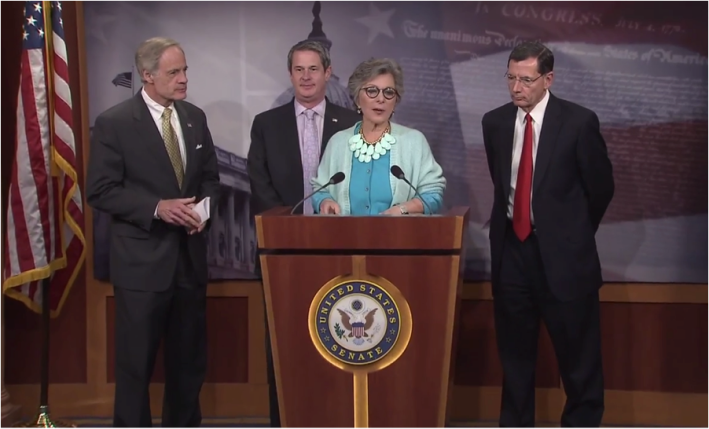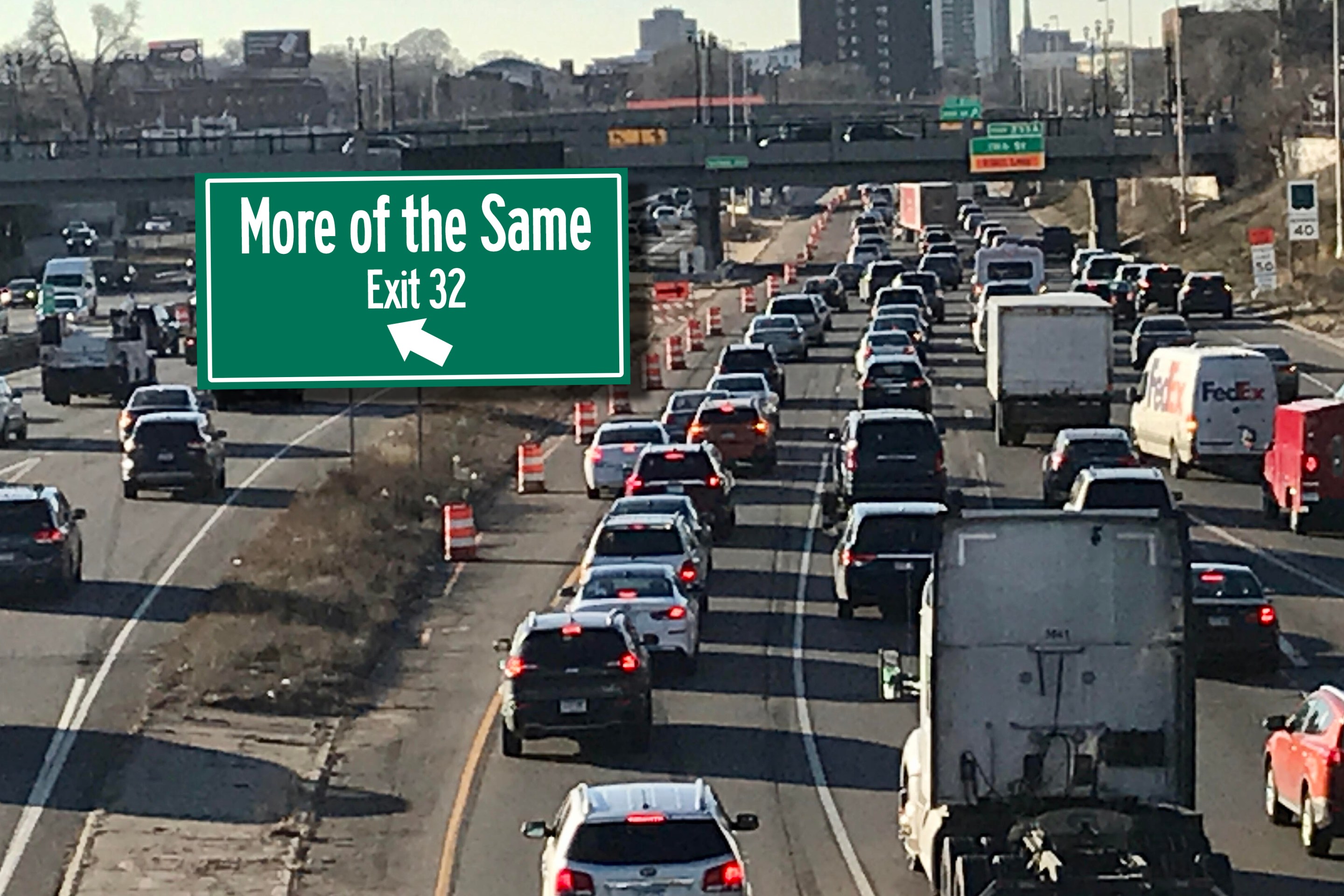
Last year, while the House flailed in partisan misery, the Senate passed a transportation bill 74 to 22. When the bill was signed into law, it was considered one of the few real achievements of a deeply divided Congress. Environment and Public Works Committee Chair Barbara Boxer got tremendous credit for enacting legislation three years in the making. And yet, it left a lot of good provisions on the cutting-room floor. While MAP-21 included some modest reforms, lawmakers missed an opportunity to prioritize transit, biking, and walking -- modes that are gaining popularity and help achieve national goals like congestion mitigation and air quality improvement.
History appears to be repeating itself. This morning, Sen. Boxer (D-CA) joined with the rest of the "Big Four" of the EPW Committee -- Ranking Republican David Vitter (R-LA), Transportation Subcommittee Chair Tom Carper (D-DE) and Subcommittee Ranking Republican John Barrasso (R-WY) -- to announce that they had reached agreement on a set of principles to guide the next bill.
While it's good news to hear the senators are working together and making progress, they're not proposing any solutions to the nation's dysfunctional transportation policy, which funnels billions of dollars to wasteful road expansions ever year. Below is a look at the guiding principles (verbatim, in bold) and what they mean:
- Passing a long-term bill, as opposed to a short-term patch. You won't find anyone who says they want a short-term bill. There is unanimous agreement that a two-year bill was inadequate and that the next bill must last five or six or even 10 years. The challenge has always been to find enough funding to pay for such a long bill. MAP-21 pulled coins out of the proverbial cushions to piece together a somewhat illusory pay-for to get MAP-21 passed. Even President Obama's proposal for the next bill is just four years.
- Maintaining the formulas for existing core programs. Ouch. A primary goal of transportation reformers is to tie more money to performance and merit instead of giving states no-strings-attached funding that tends to get wasted on highway expansion. Reforming the existing formulas could force states to prove that they're spending money well, using a benefit-cost analysis in their decision making, and thinking smart about the future.
- Promoting fiscal responsibility by keeping current levels of funding, plus inflation. This will disappoint the many people looking for an increase in spending levels, who believe that MAP-21's $109 billion over two years wasn't enough to really address the country's needs. While far too big a percentage of federal funding goes toward highway expansion, the failure to grow the pie will ensure that transit and rail -- especially high-speed rail -- can't grow. The Chamber of Commerce, the unions, and most of the transportation and construction sectors want to see a gas tax increase. President Obama and Republican House Ways and Means Chair Dave Camp both want to increase infrastructure spending via corporate tax reform. Meanwhile, Rep. Paul Ryan's plan to maintain fiscal discipline by eviscerating core programs is destined for the dustbin. No one wants to go back to that tired conversation.
- Focusing on policies that expand opportunities for rural areas. Many federal spending programs, from TIGER to New Starts, maintain a set-aside for rural areas. And while no one says rural areas don't deserve good transportation infrastructure, their special treatment has a lot to do with the way the Senate is set up to over-represent rural constituencies. Where's the minimum for metro areas, which are responsible for almost all the country's new jobs, economic growth, and population gain?
- Continuing our efforts to leverage local resources to accelerate the construction of transportation projects, create jobs, and spur economic growth. This is probably a reference to the TIFIA program, which provides long-term, low-interest loans but relies in the end on local money to pay them back.
- Requiring better information sharing regarding federal grants. Perhaps they could start by requiring far clearer reporting on State Transportation Improvement Program plans.
What's missing? Any commitment to organizing the federal transportation program more deliberately around national goals like emissions reduction and safety. Any agreement to strengthen performance measures, which had a baby-step debut with MAP-21. And while we wouldn't necessarily expect to hear it in a statement of principles like this, reformers would always be keen to hear some reassurance that transit, biking and walking will get a fair shake and that road maintenance will be prioritized over expansion.
If this is what the Democrat-controlled Senate has come up with, what will the House say?
Meanwhile, as Sen. Vitter acknowledged, "Compared to the Finance Committee, which has to lead all of us in figuring out how to pay for this, hopefully, six-year bill, we have the easier role." Without the political will to do the hard work of raising revenues, even maintaining current levels will be a stretch.





